Amod Rahalkar, Pune
It is Sadashiv peth, part of old city of Pune. Peth means sector. It was created in mid-18th century during the reign of Madhavrao Peshwa. Since then, it has only seen growth. One of the highly populated areas of Pune, narrow roads, cramped houses define Sadashiv peth of today. Memories of old Pune, heritage structures and new buildings live in harmony here.
Amod Rahalkar’s terrace garden is truly an oasis amidst the concrete jungle around. Till you reach his terrace, it is difficult to believe that such a green patch exists there. It is all due to hard work put in by Amod and his family.
Here is why and how Amod started garden
He started it with the primary objectives of
- Utilizing wet waste in his own premises instead of giving it to municipal waste collection system
- Creating habitat for birds, butterflies, honeybees
- Creating green cover over the concrete terrace for cooling effect for his house
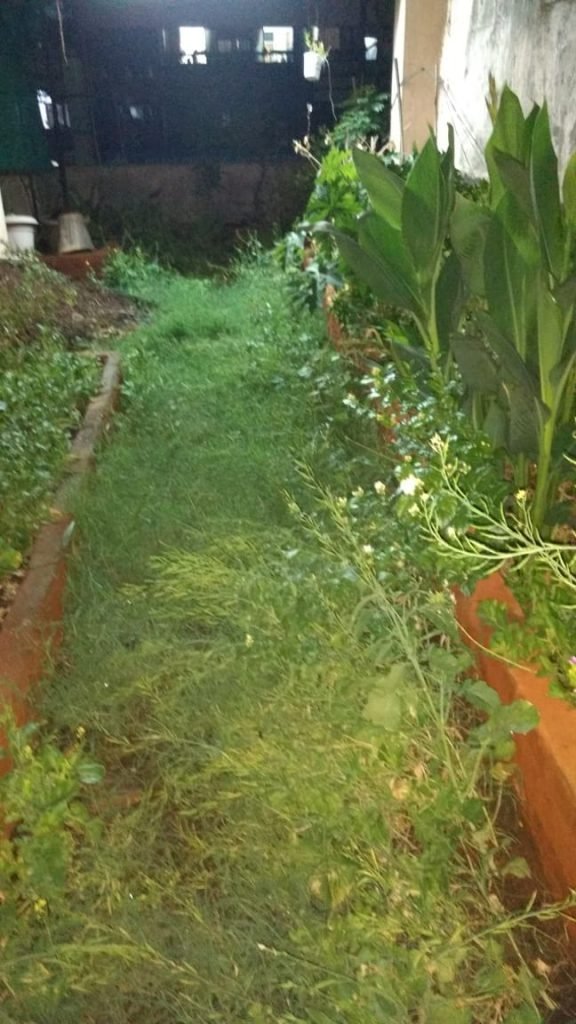
Amod’s family owns hall that is rented out for ceremonies. Catering services are provided to this hall. Due to catering services, daily around 15 kg of kitchen waste is generated. All this wet waste is composted and utilized in the terrace garden.
Waterproofing
This remains a grey area for Amod. An expert recently suggested that waterproofing lasts for around 10 years. It needs to be done again for any terrace, with or without garden.
At the same time, there are many in the city, who have had terrace gardens for last several years and yet have never faced any issue with waterproofing.
One of the experts suggested terrace garden prevents heating of concrete. When concrete gets heated in the sun, it expands, and cracks appears causing leakage. So, in fact, terrace gardens prevent leakage.
As far as he is concerned, Amod got waterproofing done when he started the garden and till now hasn’t faced any issue. For plant beds, he used thick plastic sheet at the base, the same used for farm ponds.
Amod’s suggestion is to avoid water logging because that is what leads to leakage. Ensure proper slope to the terrace for water to flow away. Also, for plant beds, there should be provision for excess water to drain.
Note: We will have a separate blog dedicated to “waterproofing terraces” soon.
Planning
Like any other project, deciding objective is necessary for terrace garden. Here we do not have acres and acres of land at disposal. Hence to get maximum out of a few hundred sq. feet, we need to decide exactly what we wish to cultivate.
In Amod’s case, this objective was three-fold. Utilization of wet waste was achieved through composting. For creating habitat for birds, bees and butterflies, he focused on certain species, that attract these winged friends.
He also got stingless bees and beehive. It provided habitat for bees and also facilitated pollination.
There are various insects in the compost that attract birds. Not even sparrows visited his terrace which now has around 20 species of birds. Sparrow, Crow, Laughing Dove, Purple Sunbird, Brahmney Myna, Common Myna, Fantail Flycatcher, Tailor bird, Oriental Magpie Robin, Scaly-breasted Munia, Koel, Oriental White -eye, Great Tit, Ashy Prinia, Green Bee Eater, Red-vented Bulbul, Red-whiskered Bulbul, Indian Robin. Some are frequent visitors, some visit occasionally.
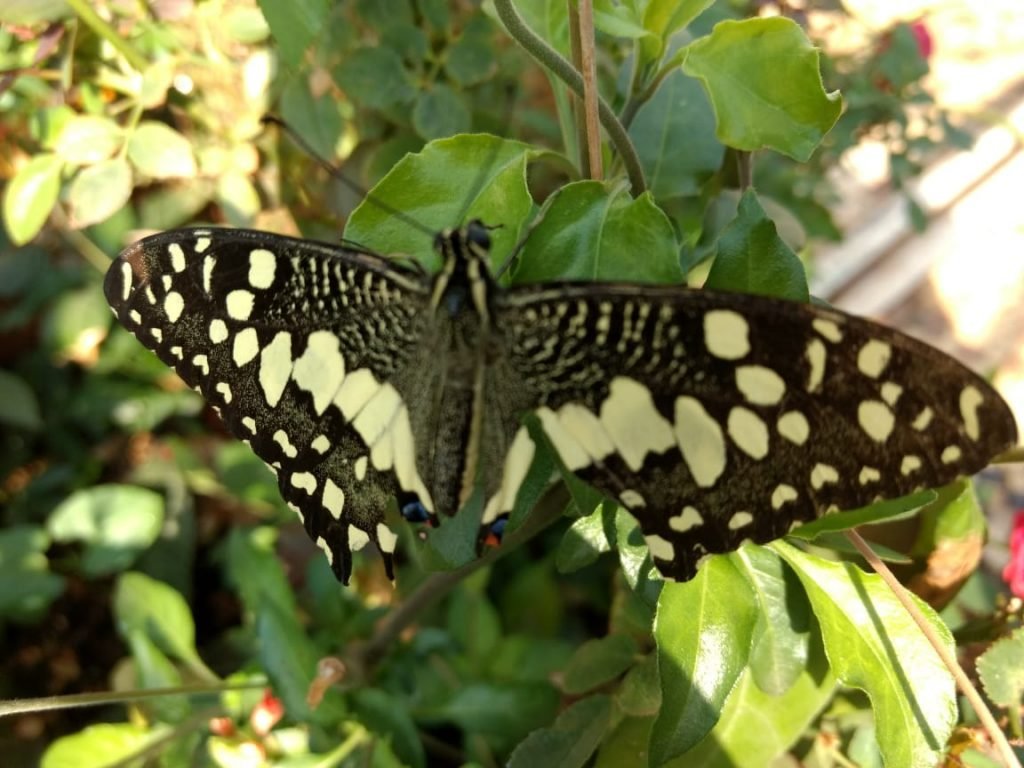
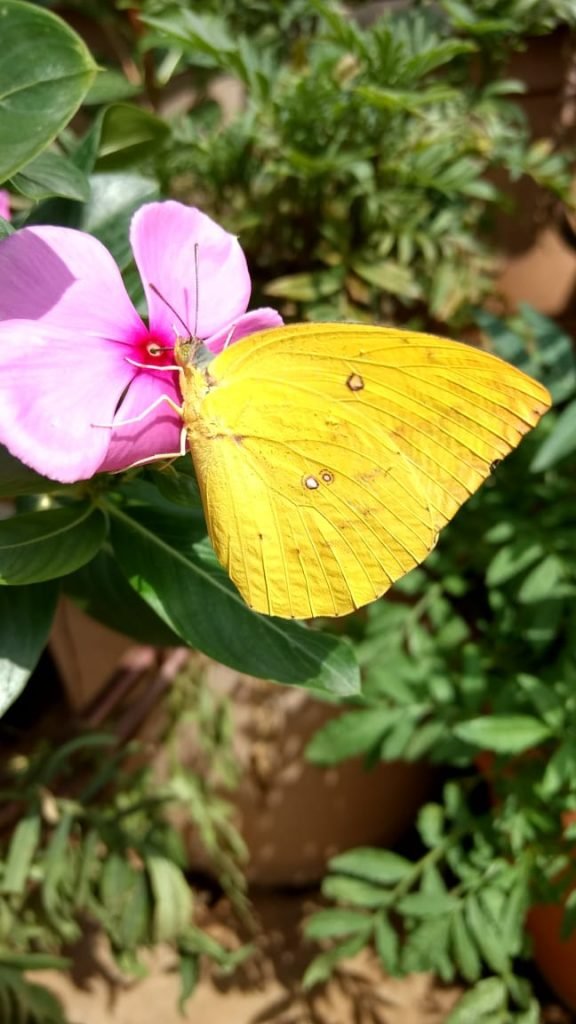
Habitat for butterflies
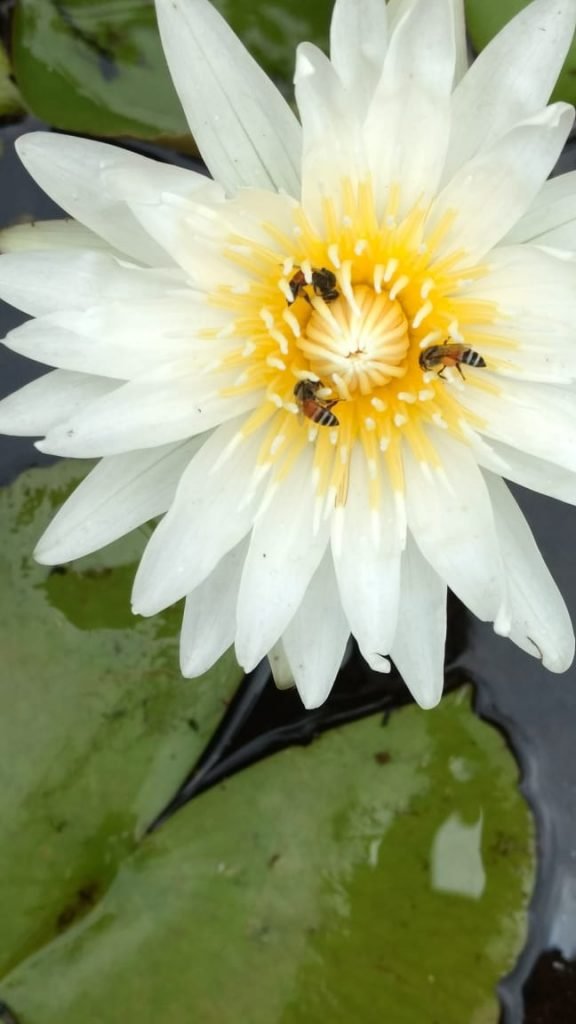
Honeybees on Water Lily
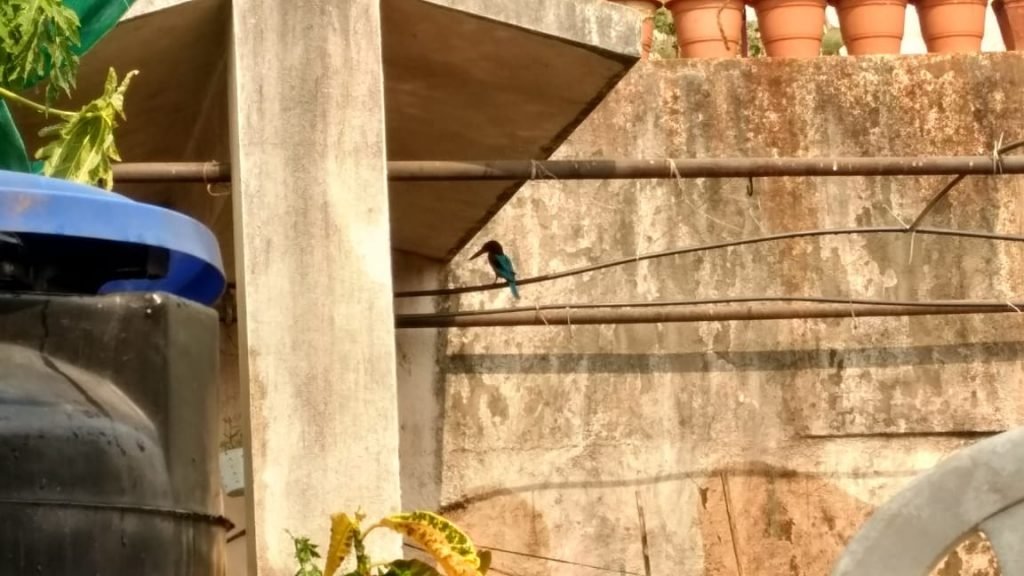
White-throated Kingfisher
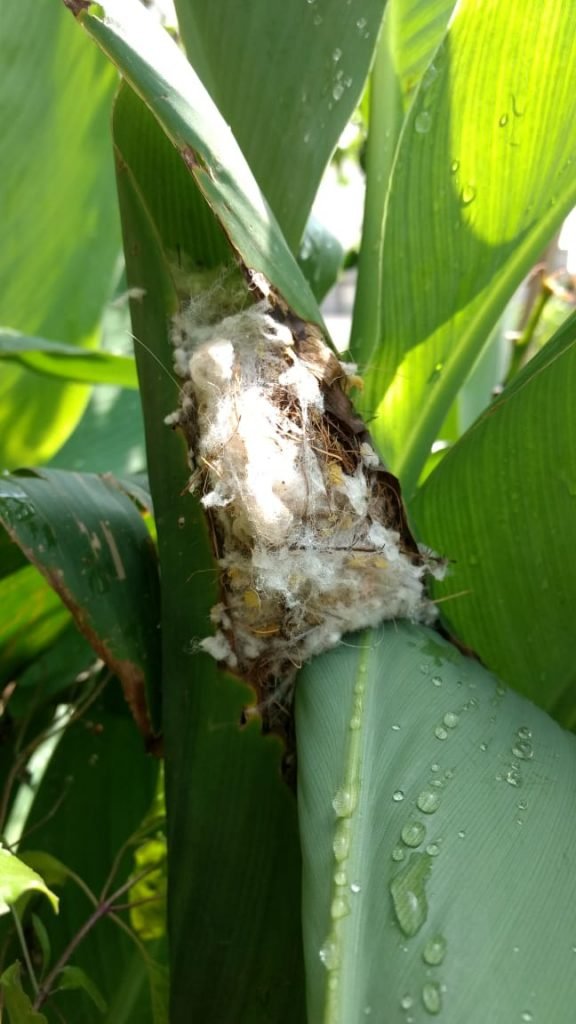
Bird’s nest in kardal bush
Preparation
For soil-less gardens, some planning before-hand is necessary. Visit to nursery to buy plants and seeds is very exciting. But unlike soil garden, here we need to prepare compost before we can start plantation or sowing.
How does Amod prepare compost?
Compost is prepared using kitchen waste in tumbler composter. The yellow handle is used to rotate the drum. Rotating it provides aeration which is one of the vital factors for compost. Aeration (A), Temperature (T), Moisture (M), ATM, are required for this process. Kitchen waste already has water content, so moisture is taken care of. Being in tropical region, temperature is not much of a challenge. Ensure sufficient diameter of the drum. If it is too narrow, then required temperature will not be available for the core.
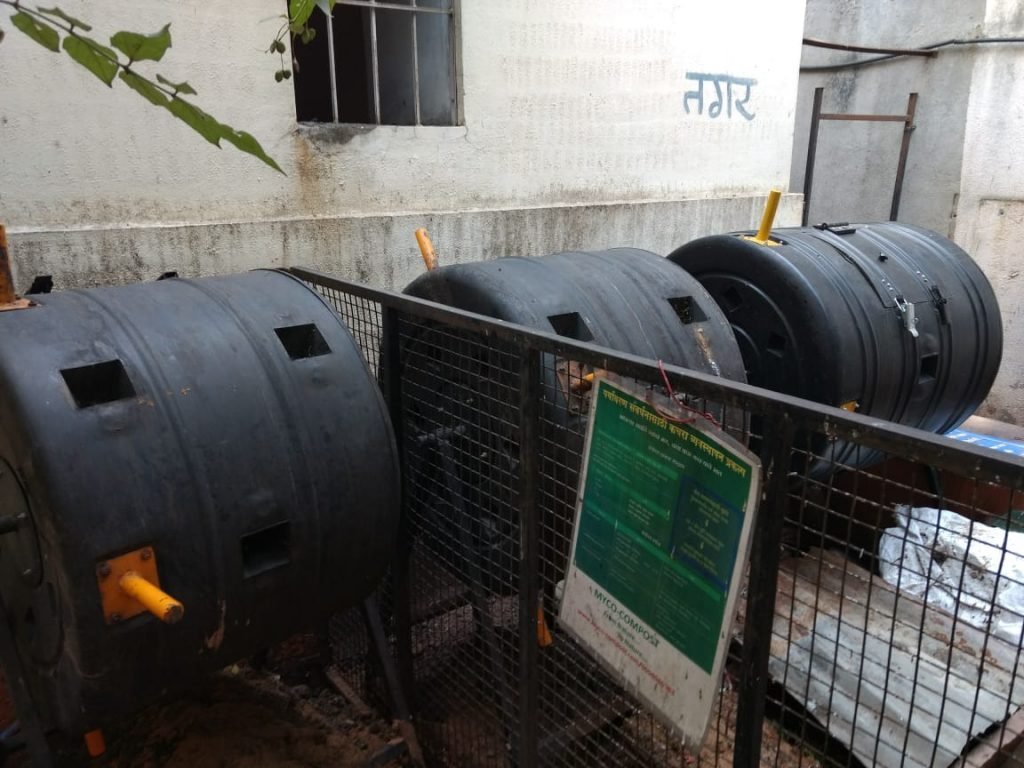
Preparing plant beds and containers
Thick plastic sheet, the same used for farm ponds, is placed at the base for the plant bed. Bricks are merely arranged on top of one another to create the boundary. Cementing is not advisable, since it block aeration. Hole are made in plastic at one side, for excess water to drain.
Lower layer of plant bed/ container should be made of porous material that does not decompose or decompose slow, to avoid compaction, allow aeration and drainage for excess water. Pieces of brick, pieces of broken clay pot, twigs, coconut husks can be used here. Then compost is added. On the surface, dry leaves/ hay is placed as mulch, which forms a protective layer over the soil. Thus, soil is able to retain moisture.
To read more about mulching, do read our blog, https://brownleaf.org/mulch/
Where to get dry leaves?
Till now dry leaves were not required since kitchen waste from the catering service was enough. But in future he might need them because wet waste is getting consumed rapidly in his growing garden.
Watering
Drip and sprinkler irrigation is the way to go. It provides moisture which is required by the roots and at the same time over-watering is avoided.
Mulching helps soil retain moisture and thus water is conserved. Let leaves that fall in the plant bed be. Don’t sweep them off.
Challenges
Amod faced opposition from extended family, who reside in the same building. They were concerned about leakage from the terrace. Amod says, there will be opposition, one needs to take it in stride and continue what is right.
Produce from terrace garden
Vegetables
वांगे(Brinjal), तोंडली (Tinda), भेंडी (Okra), Chilies, वाल (Beans), दोडका (Ridge Gourd), शेवगा Drum Sticks, अळू (Taro), रताळे (Sweet Potato), Tomatoes
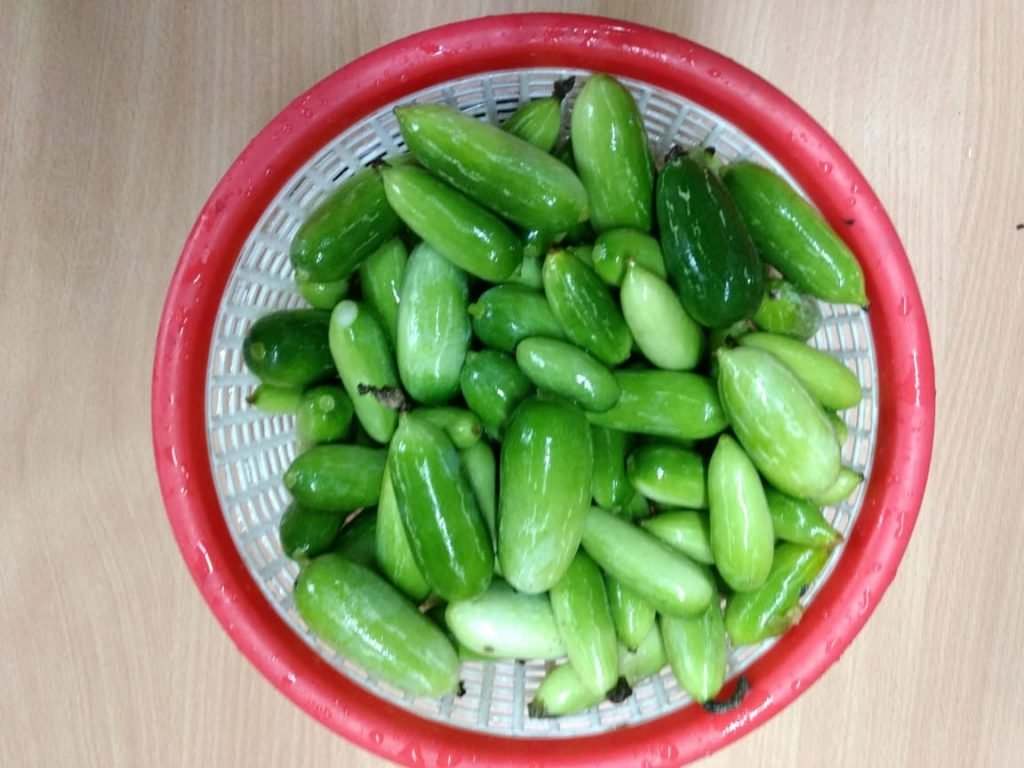
Tinda
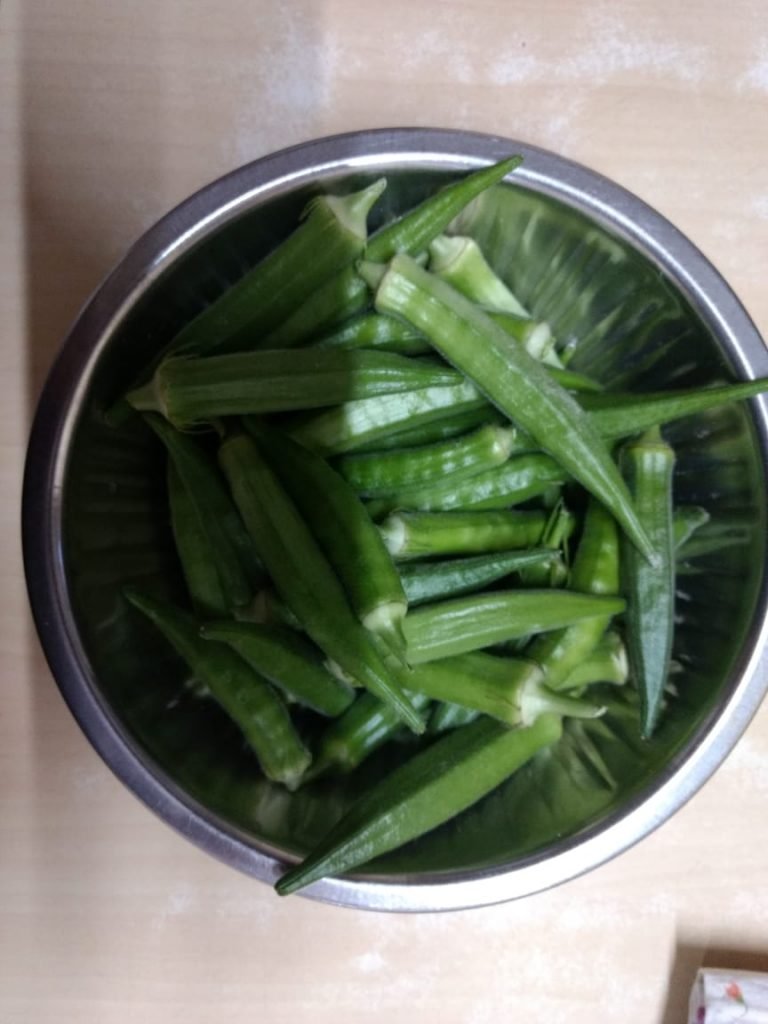
Fruits
Guava, Papaya, Pomegranate
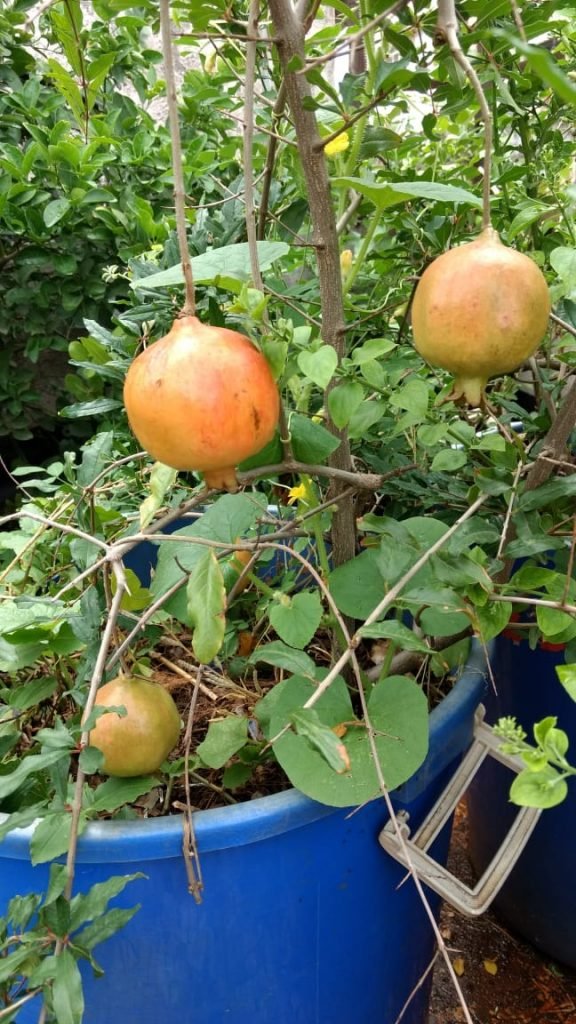
Flowers
अबोली (firecracker flower), रानजाई (Clematis genus), जास्वंद (Hibiscus), कर्दळ, कृष्णकमळ, कमलिनी (Water Lily)
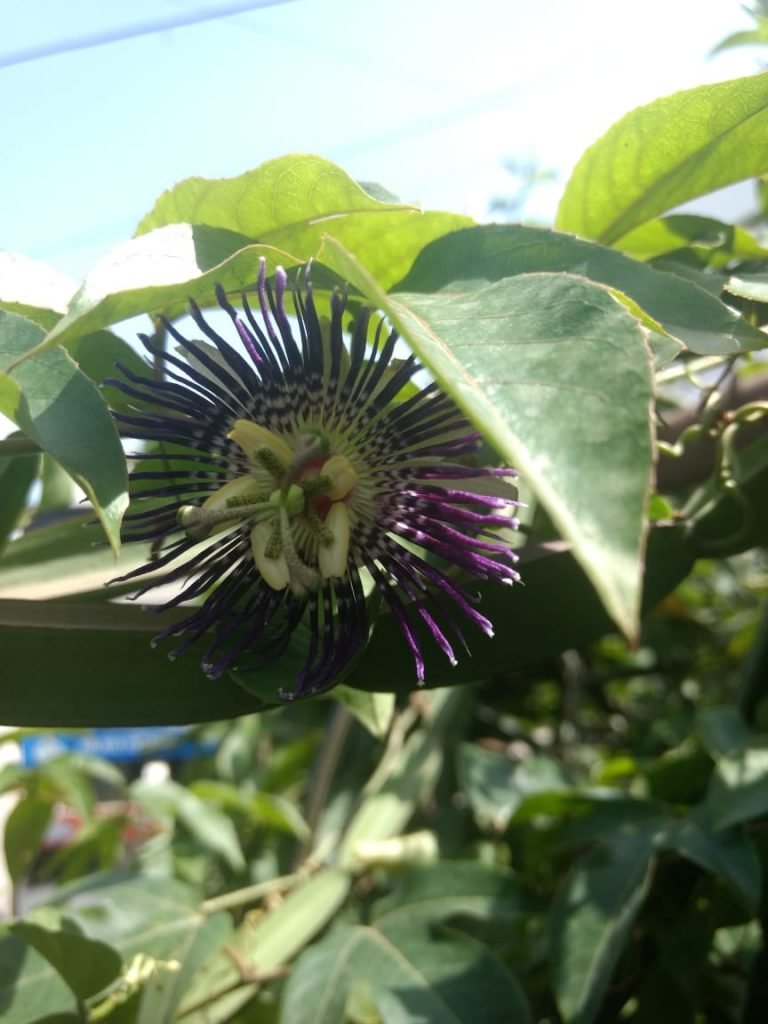
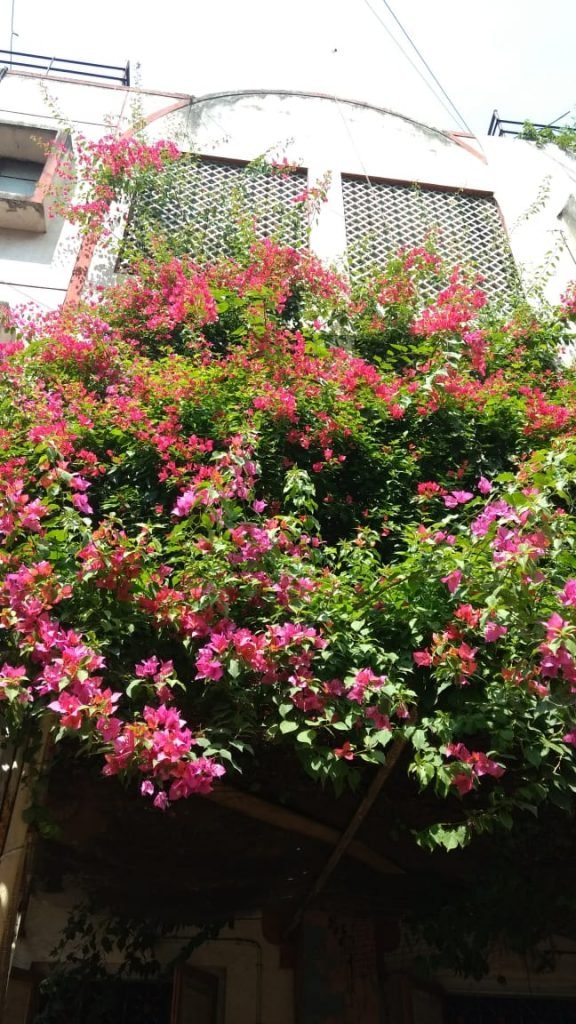
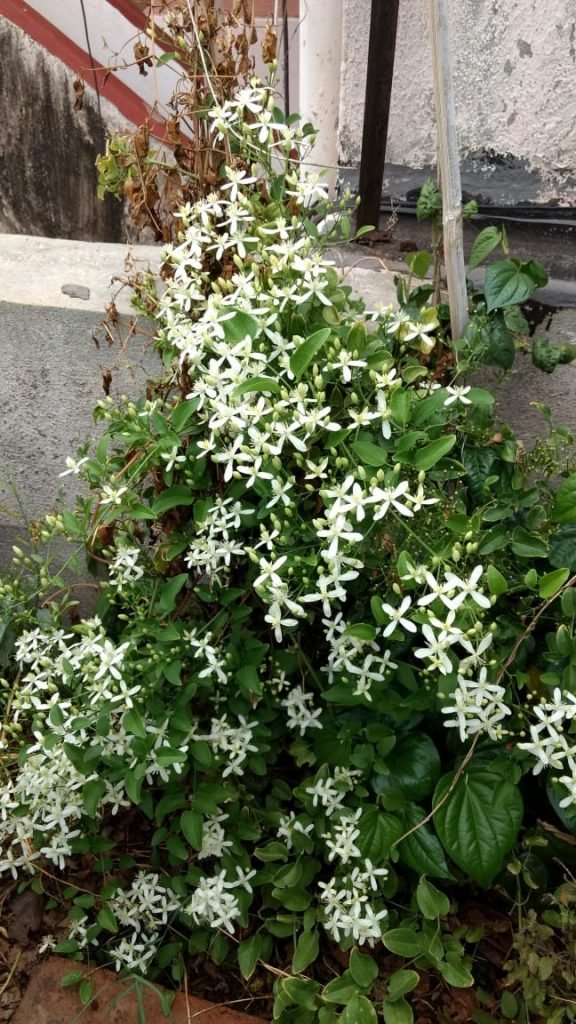
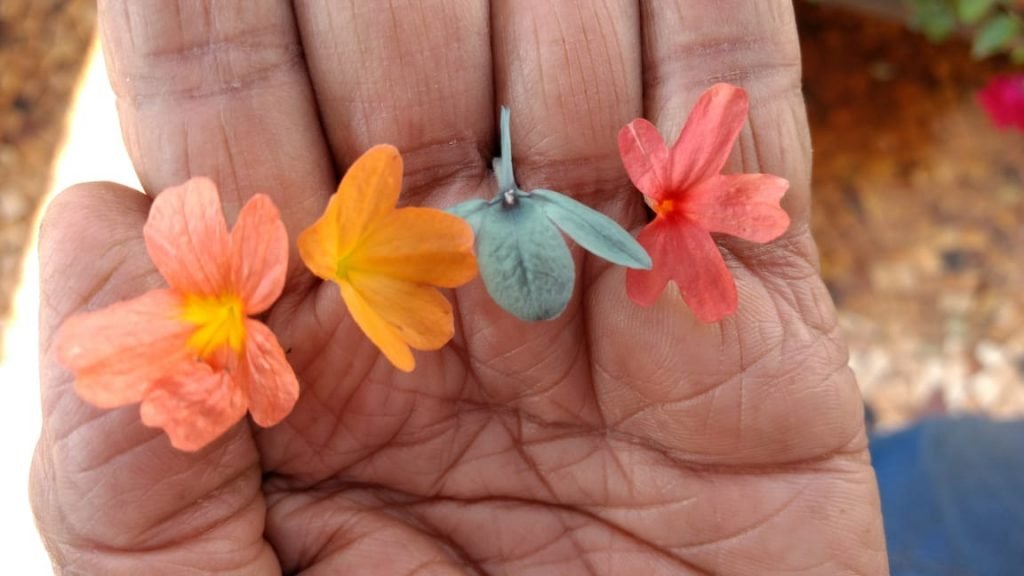
Aboli flower in 4 different colors
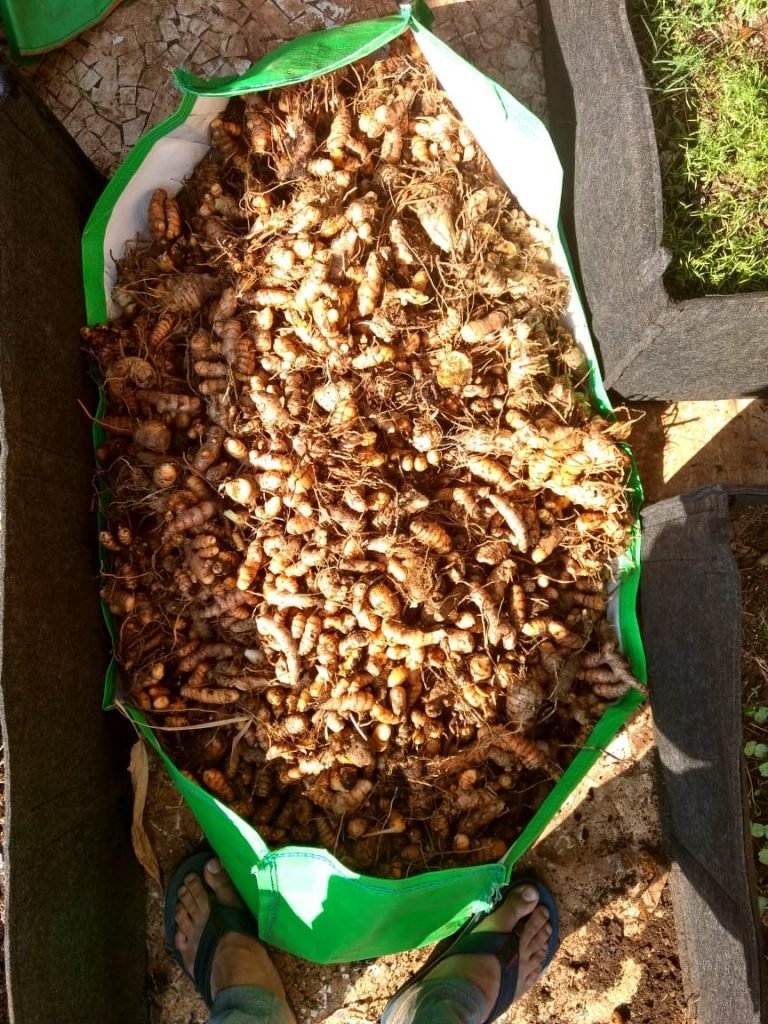
3 kg turmeric was planted, got 27 kg produce from it. When ground, 6.5 kg of turmeric powder was obtained
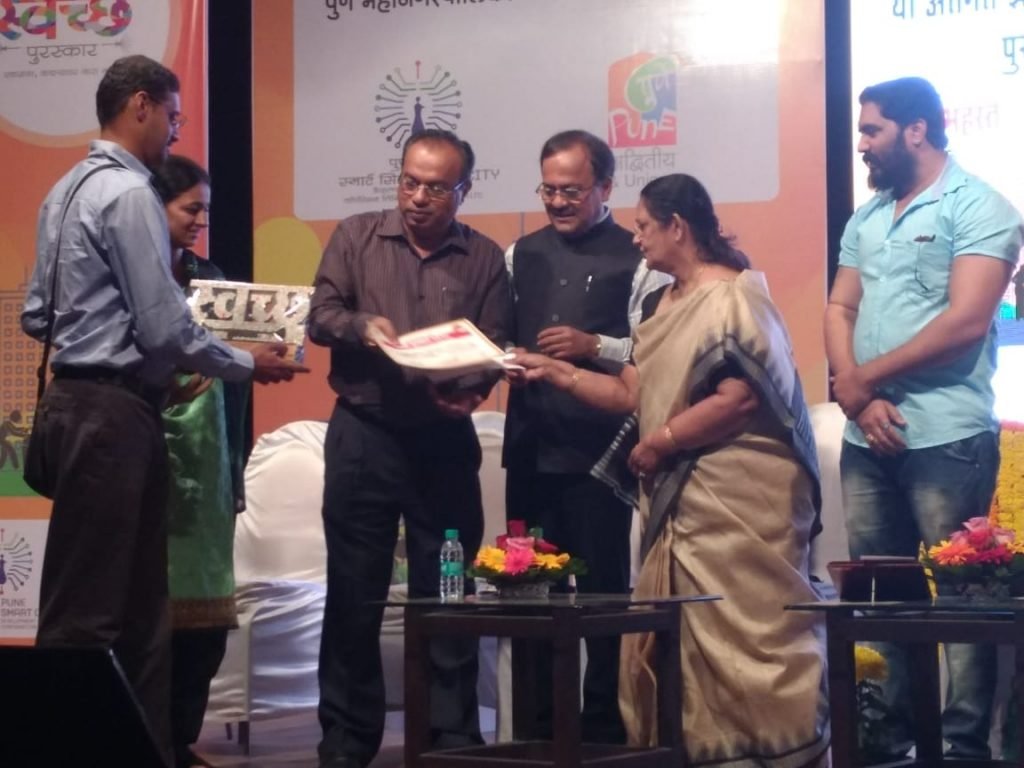
Amod received “Swachh Award 2018” by Pune Municipal Corporation for his contribution towards clean city through his terrace garden initiative
Concluding Words
Terrace garden has enabled Amod to utilize wet waste as compost, which takes some burden off municipal waste collection. Due to rapid urbanization, where birds, butterflies, insects are losing habitat, his terrace garden is haven for them. His family gets chemical fertilizer and pesticide free, fresh and healthy vegetables. Though he hasn’t measured it, he has felt that his house is much cooler due to the green cover on the terrace.
Amod’s mission is to green all the terraces in Pune city. Residents in the building do not even visit the barren terraces. Terrace space is free to use, in tropical country like our’s, we get a lot of sunlight, wet waste is free, so we can create terrace garden for almost no cost.
Amod adds, “If we take aerial shots of the city, then our city should look like a forest”. That is some dream. And after reading this inspirational blog about Amod’s garden, I am sure many of you will be motivated to follow his lead, I am sure your empty terraces will inspire you.

Aditi Deodhar
Creator, Brown Leaf



nice information and well explained
Thanks Yogita
I have a terrace in Sadashiv peth which receives no sunlight because of the tall buildings that have come up all around my house. No plant would grow healthy in my property. A garden that was grown on my terrace few years back died out when a tall building was constructed in my neighbouring plot. My soil got polluted by the cement concrete mix that fell in my garden during the construction. There are two large ashoka trees just outside my compound and there is no dearth of dry leaves falling inmy compound. I also have a coconut tree in my plot and large coconut leaves too keep falling down quite often.
I would like to know if can donate these leaves, especially those of the coconut tree to someone. Are they suitable for creating compost?
Hello sir, You can certainly donate leaves. Do drop a mail to pune.brownleaf@gmail.com with you contact number. In case, you wish to create a garden again, and you need guidance regarding plants that you could grow in the changed conditions, with less sunlight, our community would be glad to help. Do mention in the mail if you wish to do that.